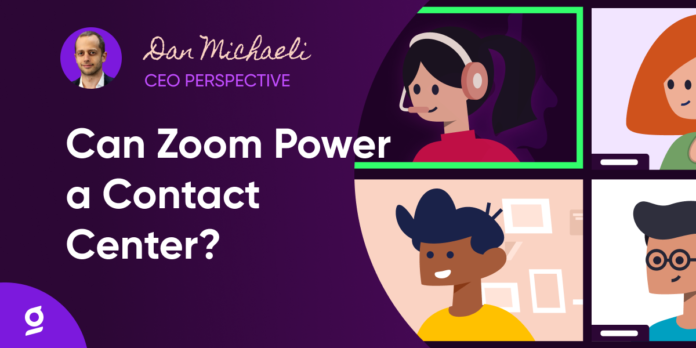In this WFH environment, we often spend the majority of the day as a square in Zoom’s grid view—that’s the way we became the Brady Bunch. At Glia, we adopted Zoom for our conferencing needs way before it was as ubiquitous as it is now. And we love it. Zoom is reliable, mobile and versatile (as well as secure…Yes I said it).
With all of us—and our parents and grandparents—now using virtual meeting software such as Zoom, Teams or WebEx so often, it begs the question, can businesses use these technologies to effectively support consumers? The answer is…sometimes. If we’re talking about scheduled interactions with specific people at the company then virtual meetings may be enough. But when it comes to high-volume, inbound, multi-channel conversations, Zoom-like interactions just weren’t built for that. If you think you’re on a lot of calls nowadays, think about a Contact Center agent. We’re talking high-octane.
The main challenge with using virtual meeting platforms in a Contact Center boils down to control. Here is a list of questions that highlight the challenge of control:
How – How are interactions started? Zoom IDs for employees can’t be simply listed on your website; it would be like listing direct extensions or cell phone numbers. How do you handle agent availability, different shifts, and the like? Plus, certain customers may have significant difficulties installing software to speak with someone.
Who – Who in the contact center receives the interaction? Routing must be dynamically adjusted depending on volume (calls increase due to the pandemic for instance) and queuing is essential at scale (imagine getting a busy signal when you call your bank). Oh, and let’s not forget transfers to a supervisor or another specialist.
When – When should interactions happen with customers? Besides the need to determine teams/scheduling, Contact Centers need a business logic engine that can proactively detect customers that need assistance.
What – What happens during and after the interaction? Client authentication; surfacing information from previous conversations; tracking interaction metrics/agent performance and producing reports are all essential for providing stellar customer service at scale.
Every type of communication software has its place. Think of Zoom, Teams, WebEx or any virtual meeting solution like a public bus. It’s great for shared rides and scheduled destinations. But if you want a personalized, door-to-door experience, you’ll probably want an Uber. Contact Centers are powered by specialized purpose-built solutions so that Customer Experience can scale within an organization. “Zoom In” for scheduled meetings and “Zoom out” for Customer Service conversations.





